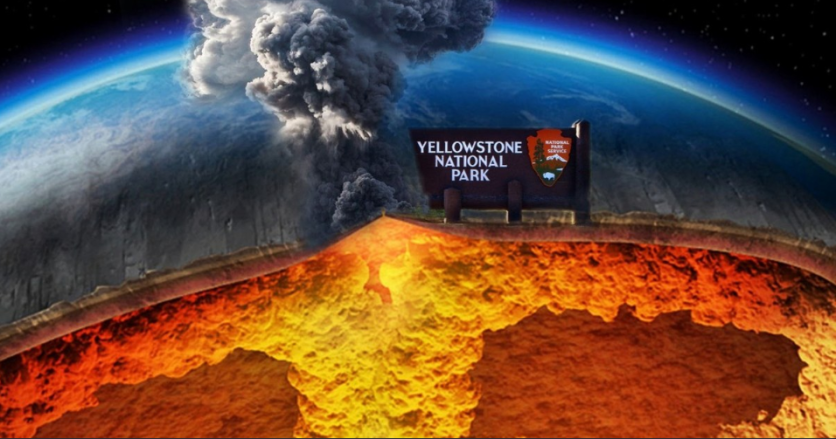Yellowstone volcano is acting up once again, with an "increased risk" warning. Scientists are uneasy with the deep magma intrusion that has been building up ever since it was discovered in nearly four decades ago.

Scientists Use GPS Data to Model What Might Have Happened Below The Surface
As scientists continue to speculate as to what happened underneath the surface of Yellowstone, they had to resort to the usage of GPS modeling to render what might have happened to explain the erratic nature of the location. The surface seems to be deflating and inflating in irregular patterns.
Research Published Last January
Their research published in the Journal of Geophysical Research has revealed that a vast body of magma had "intruded" beneath Norris sometime in the Nineties. It also wrote, "Recent activity has provided new insights into the causes of surface deformation in and around the Yellowstone Caldera, a topic that has been debated since the discovery of caldera floor uplift more than four decades ago.
"An episode of unusually rapid uplift centred near Norris Geyser Basin along the north caldera rim began in late 2013 and continued until an earthquake on March 30, 2014, thereafter, uplift abruptly switched to subsidence.
"Split at rates of several centimetres per year resumed in 2016 and continued at least through to the end of 2018.
"Modelling of GPS and interferometric synthetic aperture radar data suggests an evolving process of deep magma intrusion during 1996-2001."
What is The Norris Geyser Basin?
This is a part of the park that is the oldest, hottest, and most lively in terms of thermal emission. This is also an area as large as the size of Chicago, and so far is the most at risk where an eruption would start in Yellowstone's supervolcano.
Dan Dzurisin has also published something in reference to the supervolcano and had this to say: 'Hydrothermal explosion features are prominent in the Norris Geyser Basin area, and the apparent shallow nature of the volatile accumulation implies an increased risk of hydrothermal explosions.'
'For the first time, we've been able to track an entire episode of magma intrusion, degassing, and gas ascent to the near-surface. For those in the know, like you, that's awesome-not alarming,'
What Happens Now And Should You Worry?
Magma-derived fluids are closer to the surface now just about a mile or so below Yellowstone. Thankfully, the research has debunked many who believes that their lives are in danger. Many people say that it is already overdue for an eruption, Jacob Lowentern is Yellowstone Volcano Observatory's Scientists-in-Charge said: "When you see people claiming it's overdue, usually the numbers they come up with say the last eruption was 640,000 years ago, but it erupts every 600,000 years."
"But, in fact, if you average the eruption intervals, there's 2.1 million to 1.3 million and then another 640,000 years ago. If you average those numbers you come up with something that's over 700,000 yearsSo, in reality, even if you tried to make this argument, it wouldn't be overdue for another 70,000 years," said Lowentern.

![Apple Watch Series 10 [GPS 42mm]](https://d.techtimes.com/en/full/453899/apple-watch-series-10-gps-42mm.jpg?w=184&h=103&f=9fb3c2ea2db928c663d1d2eadbcb3e52)


